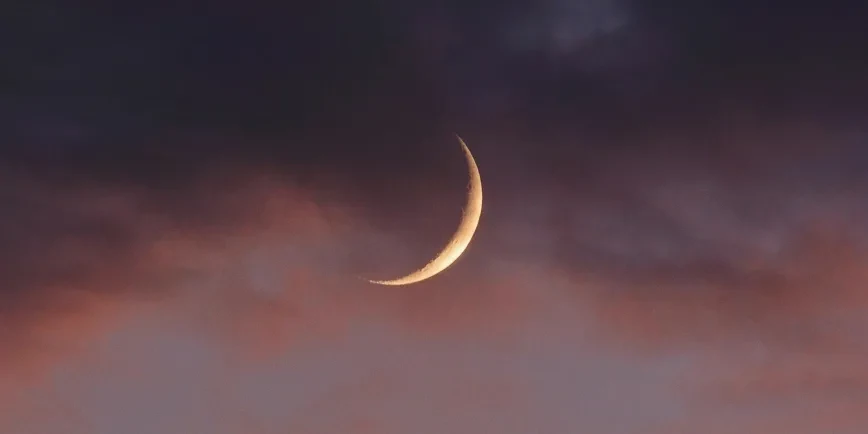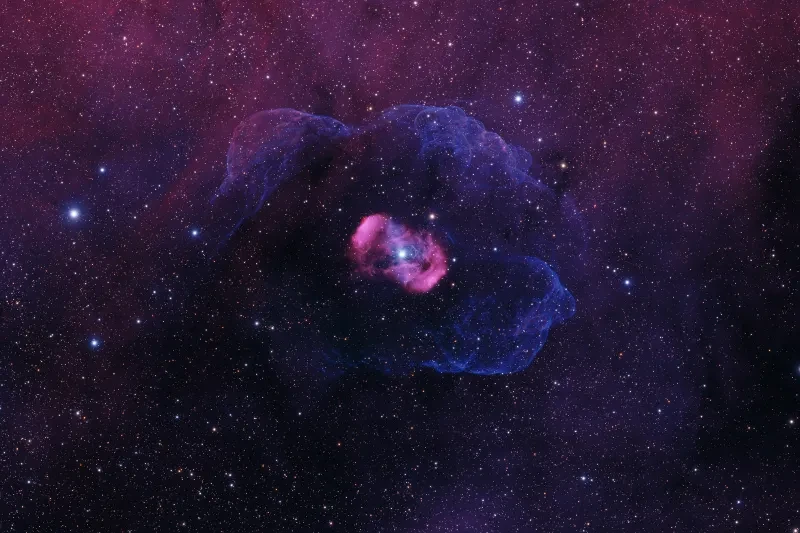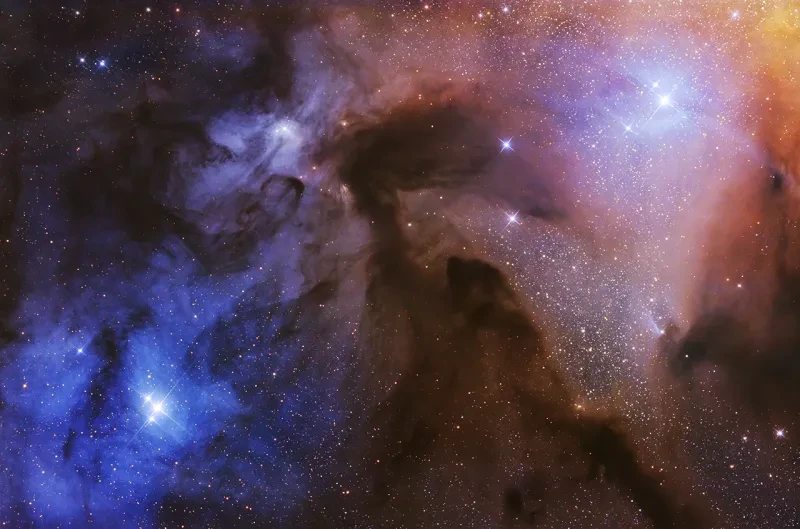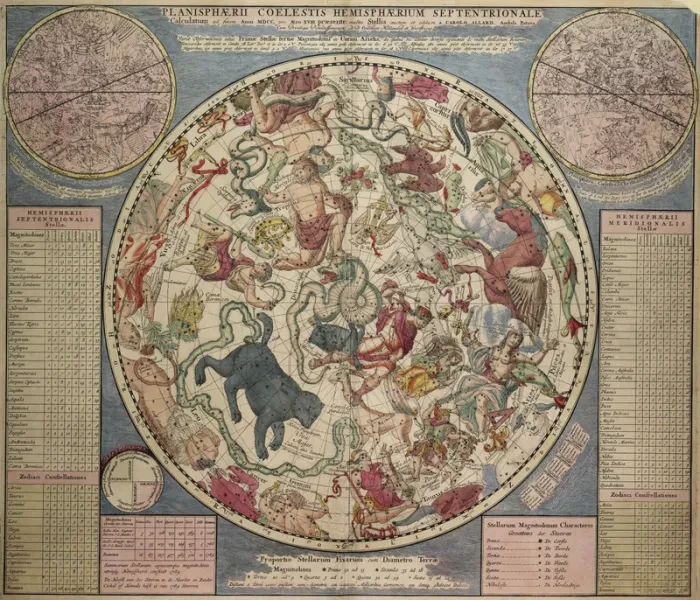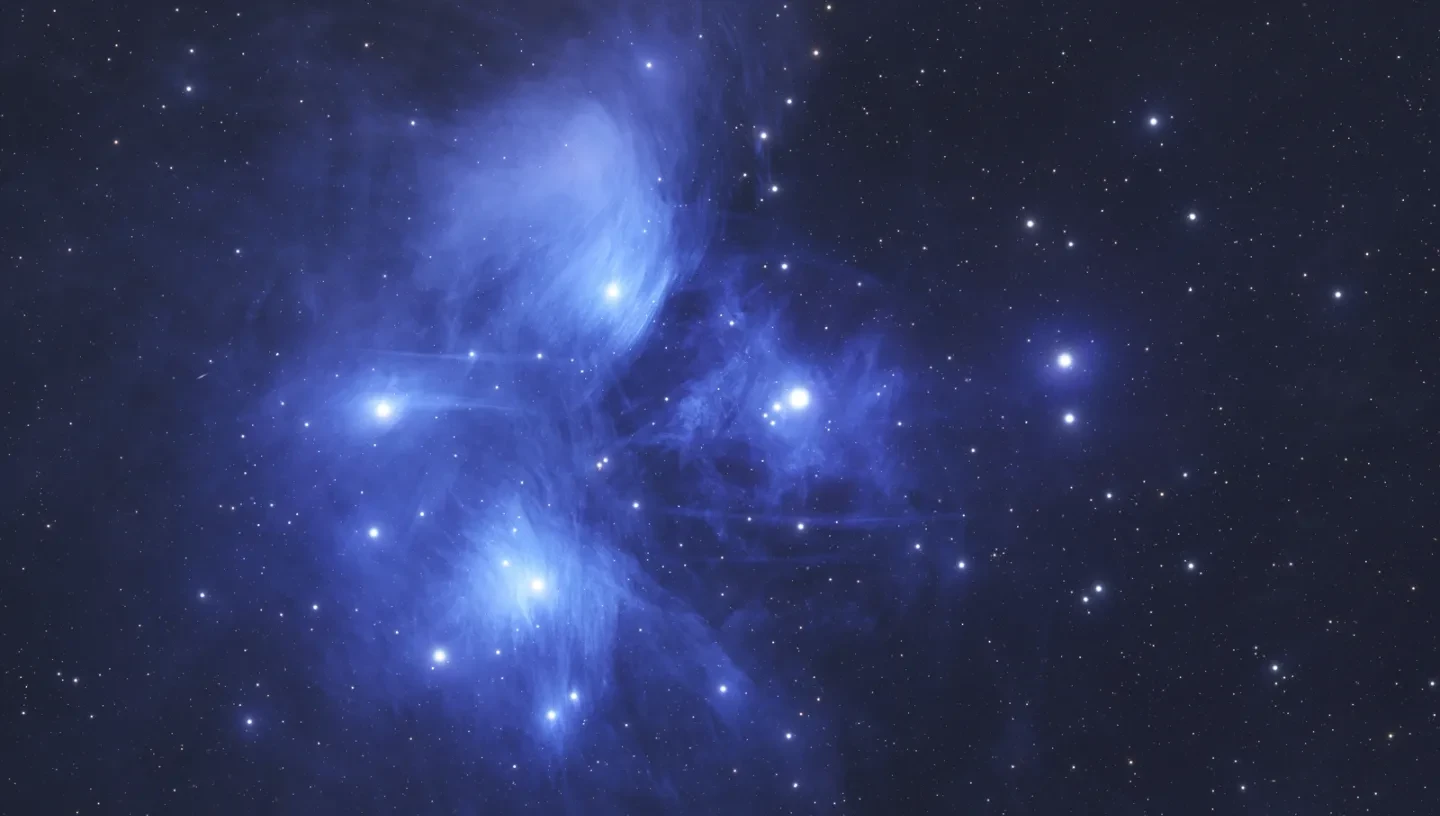
One of the most easily recognisable star clusters in the night sky is the Pleiades, also known as the ‘Seven Sisters’ or M45.
The brightest stars in the Pleiades asterism (pattern of stars) glow a luminous blue, and are bright enough to be seen with the naked eye.
Their radiance and recognisability mean that the Pleiades have fascinated both stargazers and storytellers for centuries.
Discover more about these stellar jewels with the Royal Observatory Greenwich, including how the Pleiades were formed, how to see them in the night sky and the mythology associated with them.
Skip to:
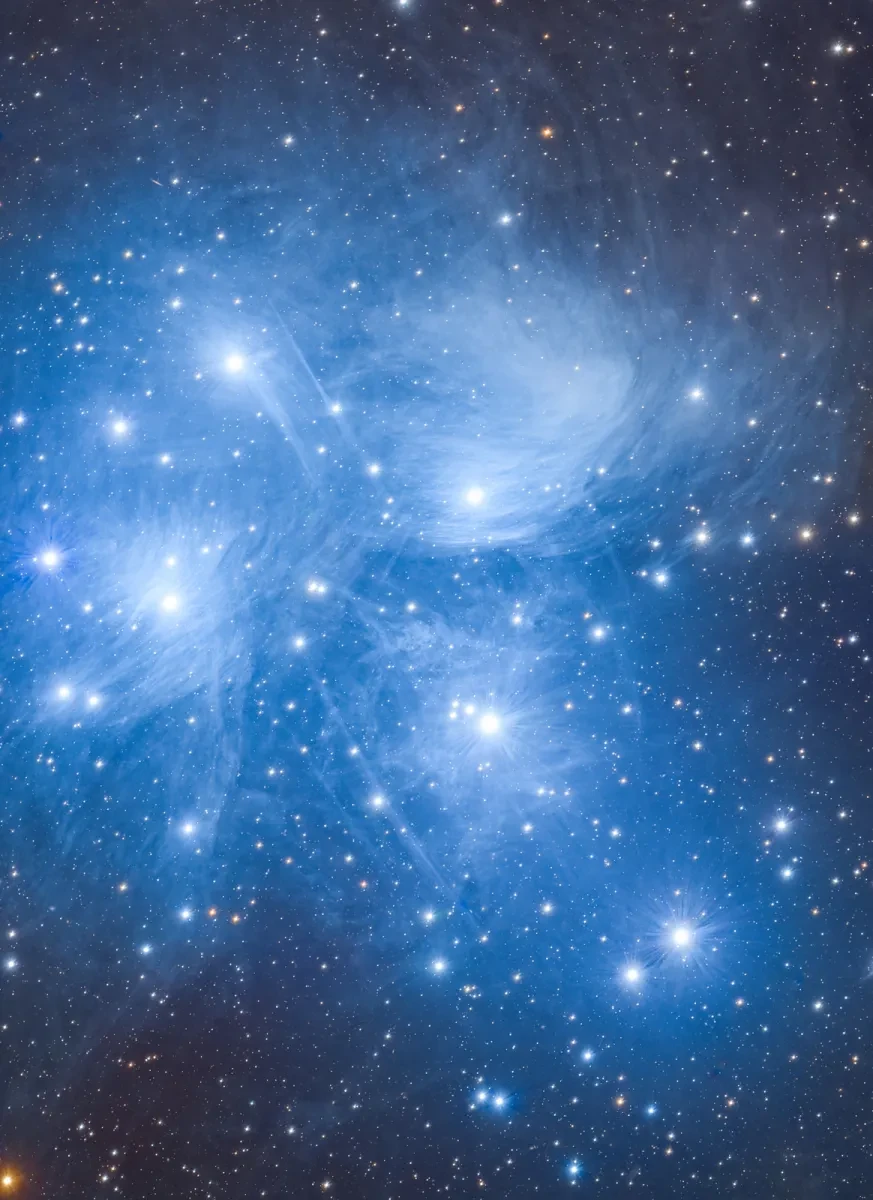
What are the Pleiades?
The Pleiades (pronounced ‘Ply-a-dees') are a young open star cluster located in the constellation of Taurus the Bull, approximately 440 light years away from Earth.
While the name ‘Seven Sisters’ may suggest there are only seven stars, there are actually over 1,000 stars in the cluster, with only six usually visible to most people with the naked eye. Sharper-eyed observers, however, may be able to spot more members of the family.
Recently, astronomers have suggested that the seventh-brightest Pleiades star varies in brightness, which explains why it’s not always visible.
One of the distinguishing features of the Pleiades stars is their striking blue colour. This is due to the stars' properties, primarily their high temperatures.
The Pleiades are winter stars and are visible from the Northern Hemisphere between October and April. They’re visible all night during November and December, making this the best time to spot them.
Birth of the Pleiades and stellar characteristics
The Pleiades are an open star cluster, which is when a group of stars are born at a similar time from a gigantic cloud of gas and dust. As they’re made from the same material, this makes the Pleiades a stellar family.
They’re believed to have been born when a cloud of gas and dust collapsed under the influence of gravity, causing the temperature to skyrocket and form the stars.
These stars are relatively young in the scheme of the Universe, with an estimated age of around 100 million years - meaning the dinosaurs were around before the Pleiades.
The dominant stars in the cluster, known as hot B-type stars, radiate immense energy and emit an abundance of blue light.
This blue light is reflected by the surrounding nebulae (clouds of gas and dust), which are appropriately called 'reflection nebulae'. This illumination effect is the cause of the ethereal blue glow you can see around the Pleiades stars.
Due to their intensity and high temperatures, the Pleiades aren’t built to last: they will burn out relatively quickly, with life spans of only a few hundred million years.
How to see the Pleiades
The best time to observe the Pleiades in the Northern Hemisphere is during the winter months, from October to March. They’re visible during the same months in the Southern Hemisphere, although are a summer asterism and will appear lower in the sky.
At very southerly latitudes, the Pleiades are visible for the majority of the year, only disappearing for around one month a year.
To see the Pleiades, choose a clear, dark location away from city lights for optimal viewing conditions (although they can still be seen from light-polluted areas).
You can use a stargazing app to help you locate the cluster, or find it by first identifying some recognisable constellations and working from there.

The Pleiades are located within the constellation of Taurus, which you can find by identifying the constellation of Orion the Hunter with its distinct ‘belt' of three stars. Follow the line formed by the belt upwards until you come across a bright reddish star called Aldebaran. Aldebaran is the eye of the bull in Taurus, and its name comes from the Arabic word for ‘follower’ - as this star typically follows the Pleiades across the sky.
From Aldebaran, continue in the same direction until you see a compact group of blue stars, and you’ve found the Pleiades cluster.
To get a closer look, use a pair of binoculars or a small telescope. Binoculars offer a wider field of view, allowing you to take in the entire cluster at once. Meanwhile, a telescope will provide a closer zoom, revealing more details and allowing you to observe individual stars within the Pleiades.
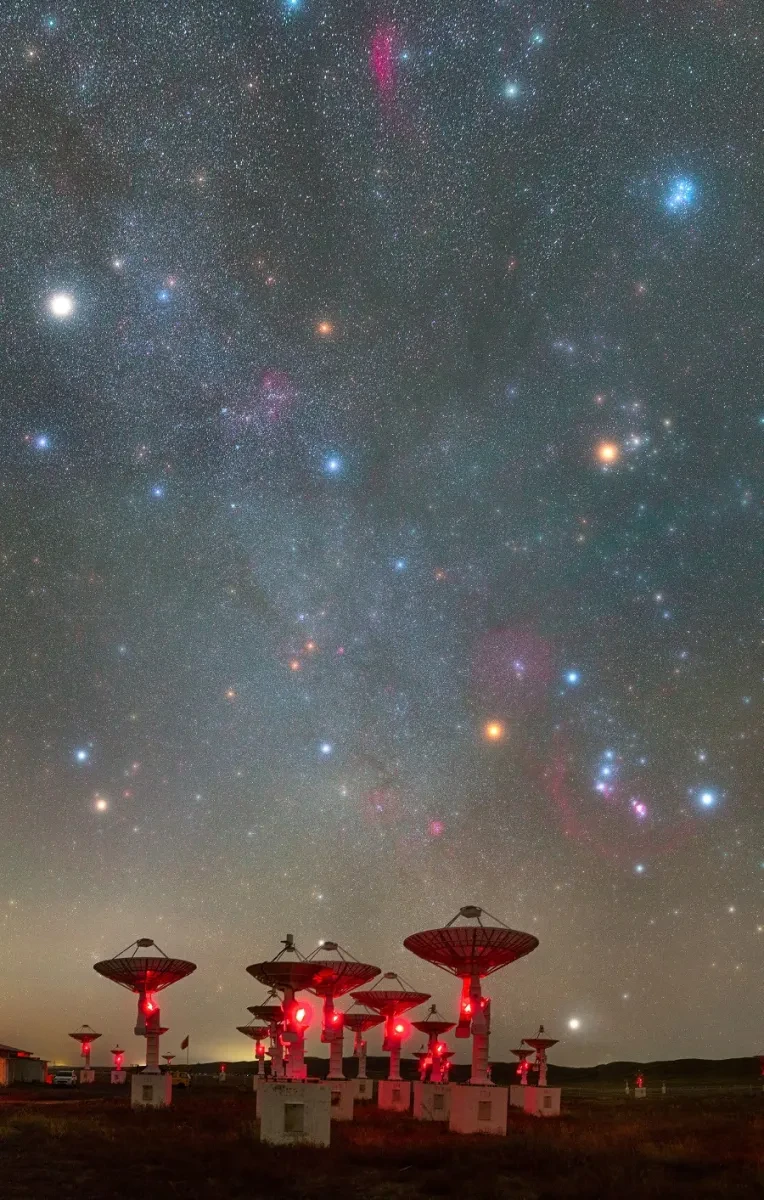
Can you see the Pleiades?
Using the technique above, can you find the Pleiades in this stunning photo?
Hello Winter Starry Sky © Runze Jiang | Astronomy Photographer of the Year 2018
The Pleiades in myth and legend
The Pleiades feature in the mythology and folklore of different cultures spanning several continents and centuries, and were known as far back as at least the Bronze Age.
Common themes in many of the myths are love, tragedy, and the everlasting beauty of the night sky.
Greek myth
In Greek myth the Pleiades were said to be daughters of the titan Atlas and the sea nymph Pleione. Each of the seven prominent stars has its own name: Alcyone, Asterope, Celaeno, Electra, Maia, Merope, and Taygete. Two further bright stars in the cluster are named after Atlas and Pleione.
The myth says that after Atlas was cursed by Zeus to hold up the heavens forever, the sisters began to be pursued by Orion the Hunter. In order to protect them from Orion, Zeus turned them into doves, and then stars.
Māori culture
In Māori culture the Pleiades are called Matariki. The constellation is visible for most of the year in New Zealand, except for a period of about a month in winter.
For many Māori the cluster’s first appearance in the sky in late June or early July marks the start of Māori new year (also named Matariki) in the lunar calendar.
Japan
In Japan the stars are named Subaru, meaning ‘gathered together’. You may recognise the name from the Japanese car company Subaru, which was named after the cluster. The company's logo features six stars, which represents the joining of multiple companies.
South Africa
In South Africa the Pleiades were called IsiLimela, and were the 'digging stars', whose appearance in southern Africa warned of the need to begin hoeing the ground.
All over Africa, these stars were used as a marker of the growing season. According to the Namaquas, IsiLimela were the daughters of the sky god. When their husband (Aldebaran) shot his arrow (Orion's sword) at three zebras (Orion's belt), it fell short. He dared not return home because he had killed no game, and he dared not retrieve his arrow because of the fierce lion (Betelgeuse) which sat watching the zebras. As a result, he still sits there to this day.
The Pleiades and Halloween
It is believed that in Druid tradition of Samhain, which many say is the origin of modern-day Halloween, was designated by the Pleiades reaching its highest point in the sky at midnight. Their culmination was said to be when the veil separating the living and the dead is at its thinnest.
What’s on
Explore the links between astronomy and different cultures with the Royal Observatory's series of community astronomy shows.
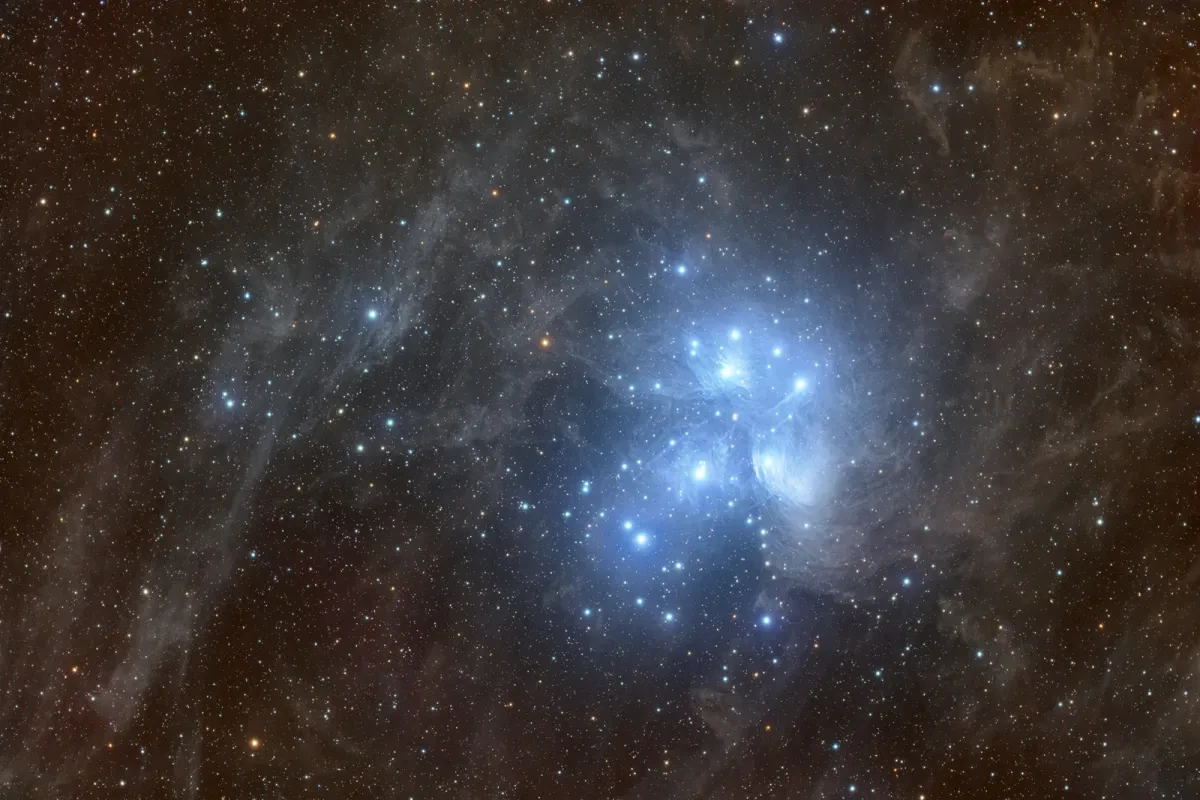
How to photograph the Pleiades
André Vilhena was shortlisted in the Stars and Nebulae category of Astronomy Photographer of the Year 2023 with his photo of the Pleiades, titled Pleiones Daughters. So, how did he take his photo, and what advice would he give someone hoping to photograph the Pleiades?
“The photo was initially planned several months ahead, and then I waited for the best timing. Since I wanted to capture the dust around the Pleiades, I needed to travel to my dark sky site, about one and a half hours away. When I do that, I usually take full nights of RGB (red, green and blue filtering) or full nights of luminance,” André explains.
“I took luminance on October 1 2022, the first available time with the Pleiades visible almost the whole night and near the new Moon. The weather began to be cloudy soon after and so the next time I was able to shoot was on January 18 2023, just in time to take RGB, also near the new Moon.
“My main advice is that it is an excellent target to photograph from every location, but expectations need to be properly set: in light polluted areas the surrounding dim dust is hard to capture, unless the total exposure time is really long. Care must also be taken to avoid overexposure of bright stars, and the minimum reasonable subexposure time should be employed. And while photographing, take a pair of binoculars and observe it with your own eyes - it is a truly remarkable sight.”
See more photos of the Pleiades
See images of the Pleiades submitted to previous years of the Astronomy Photographer of the Year competition
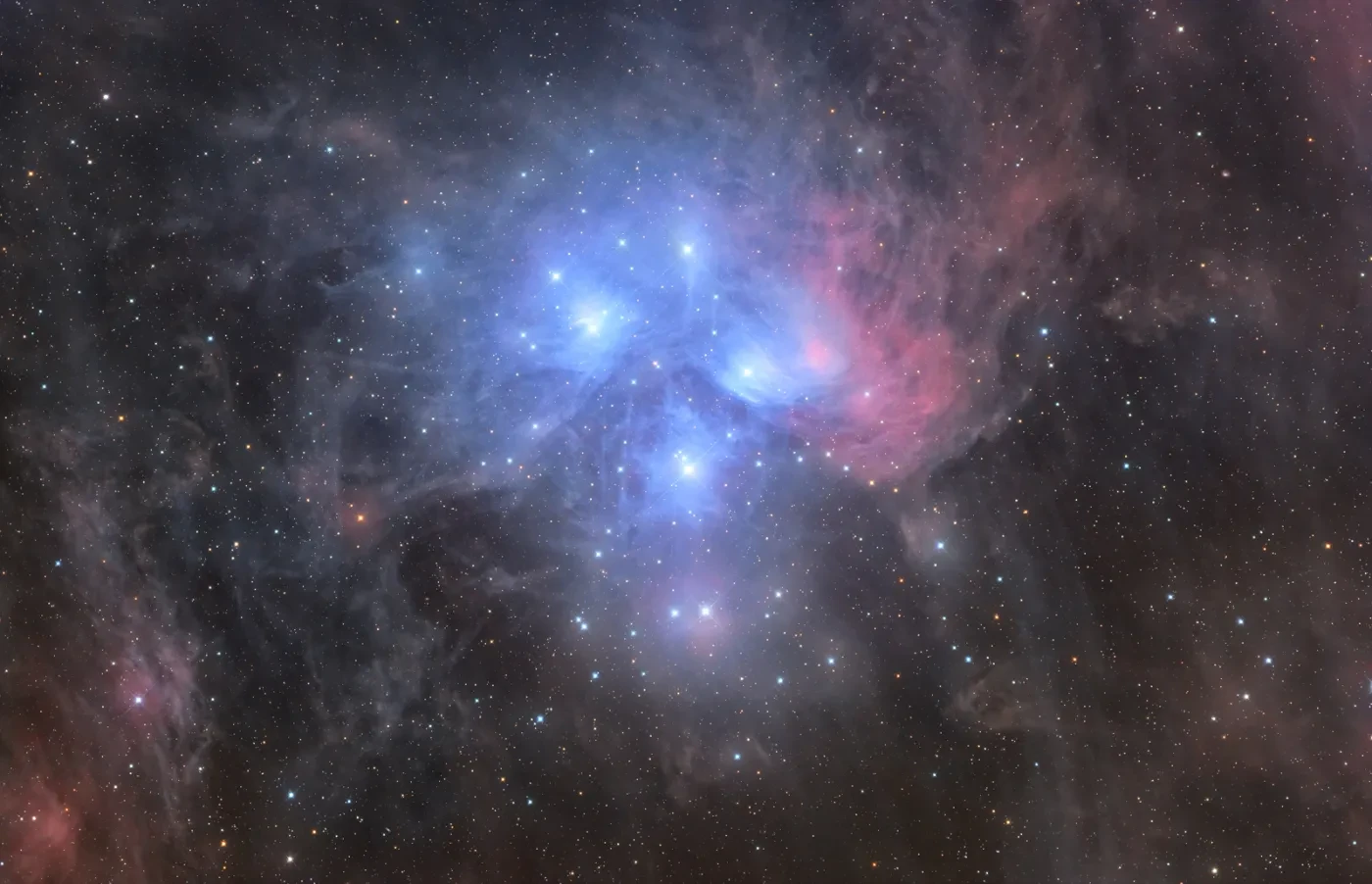
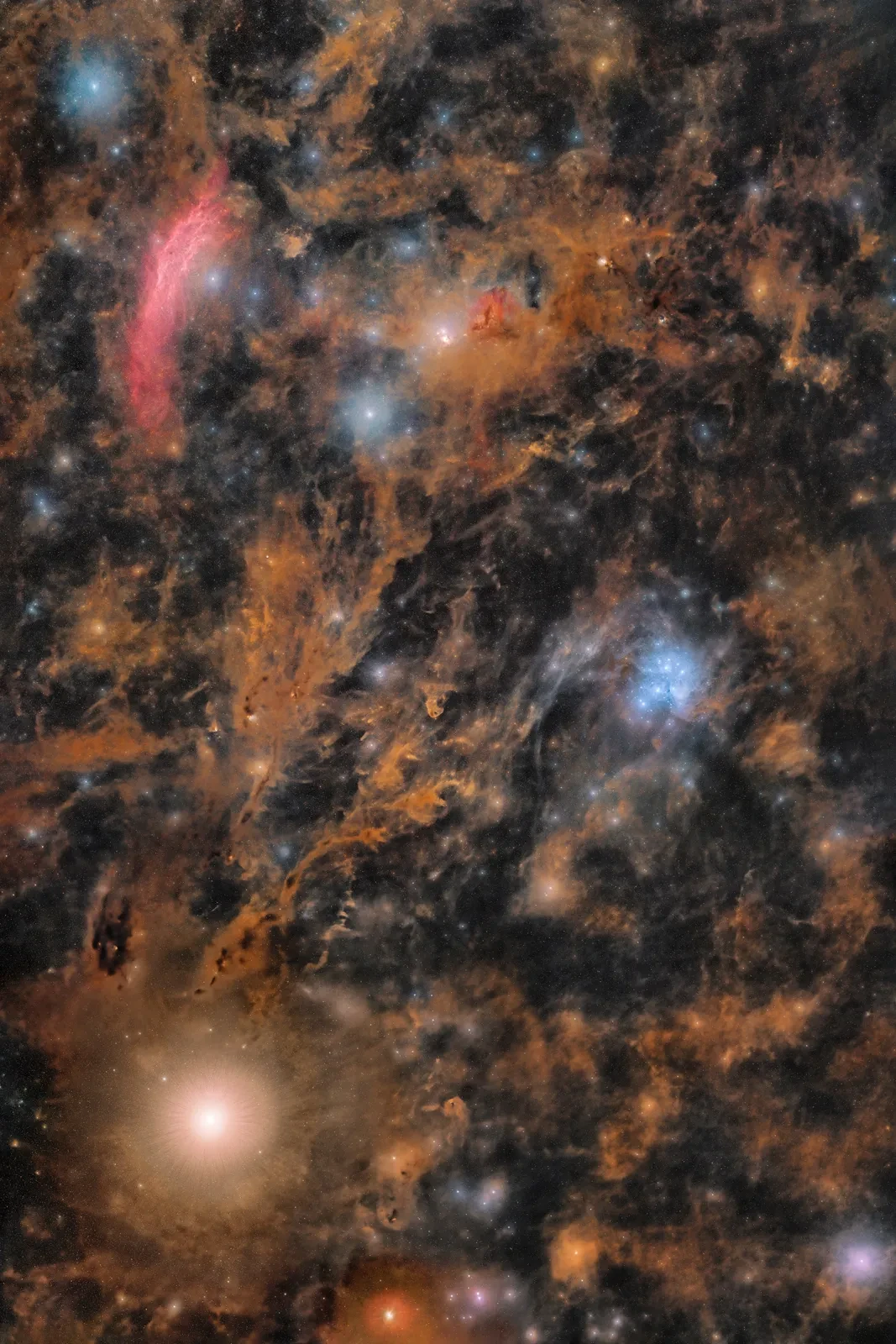
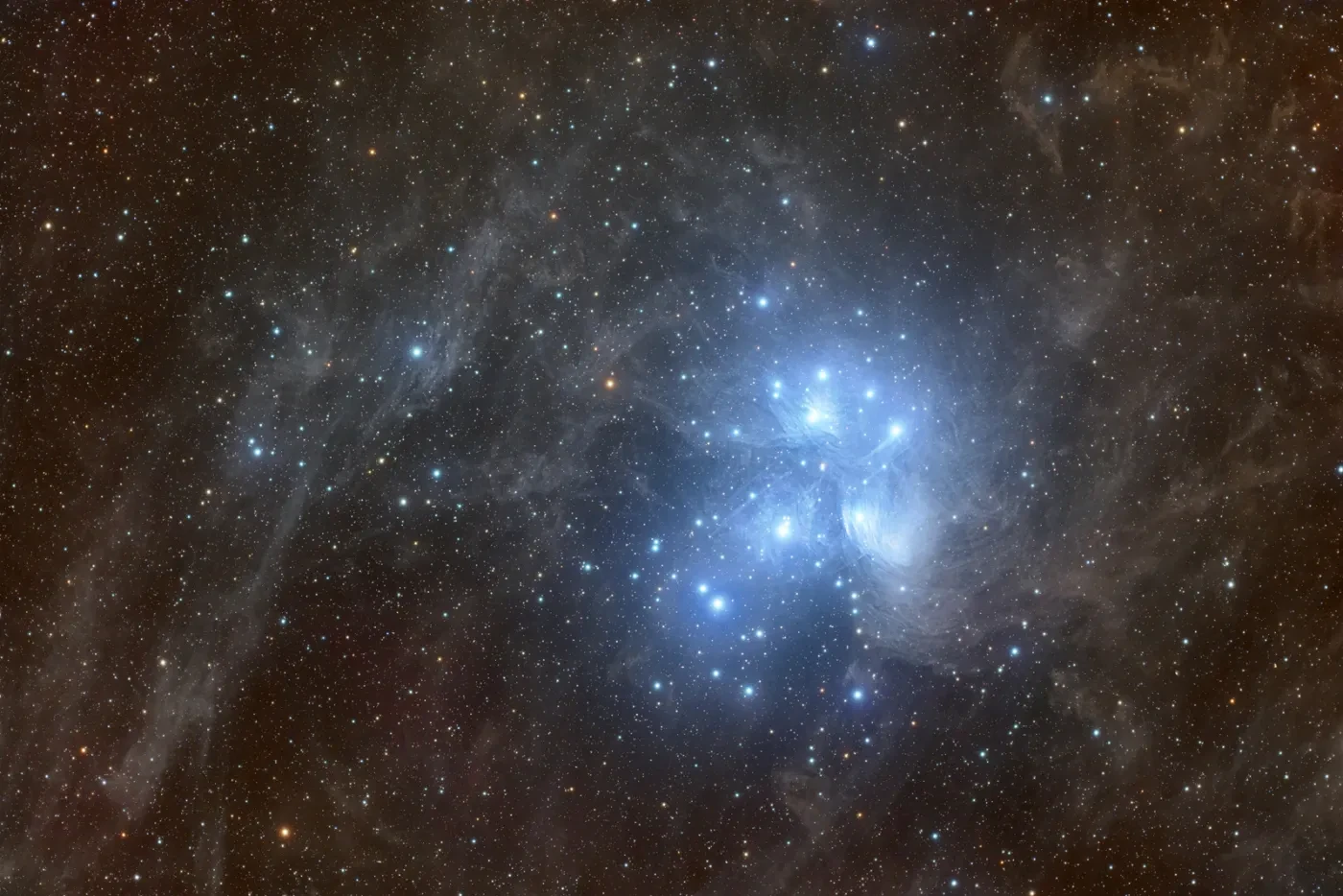
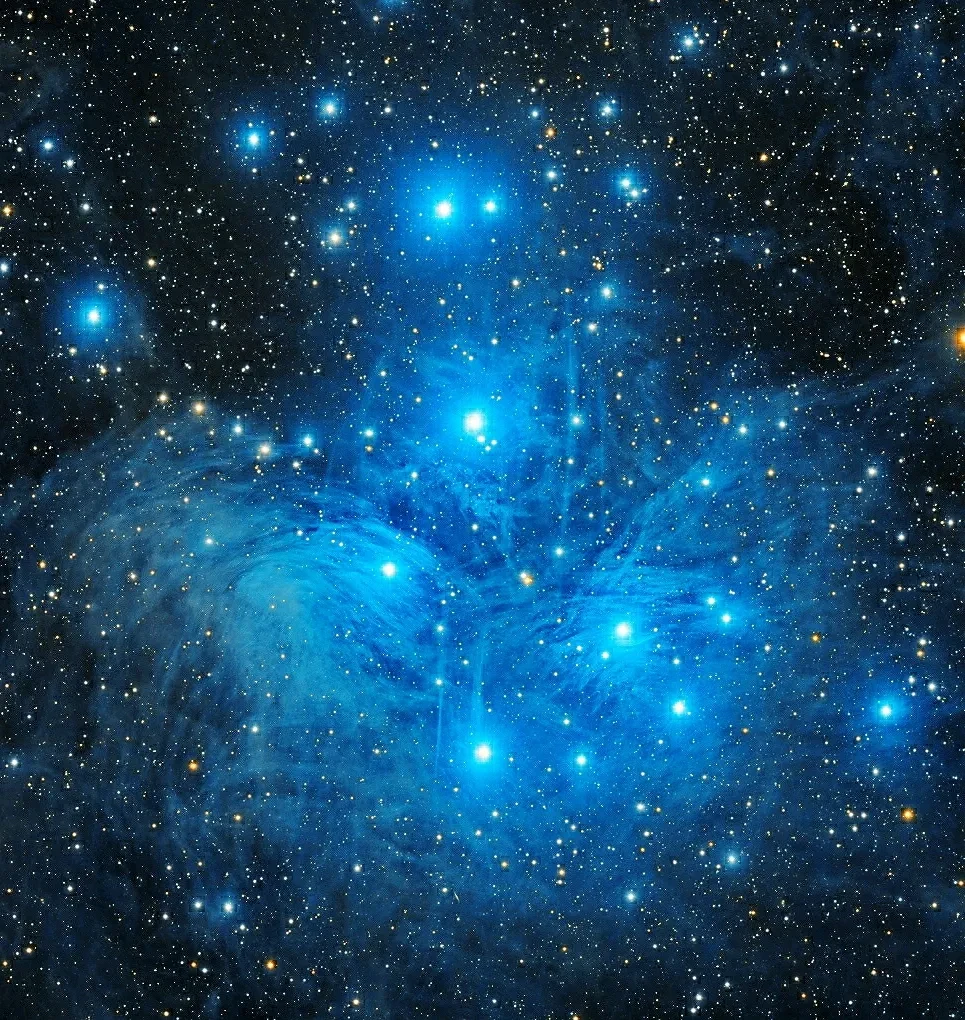


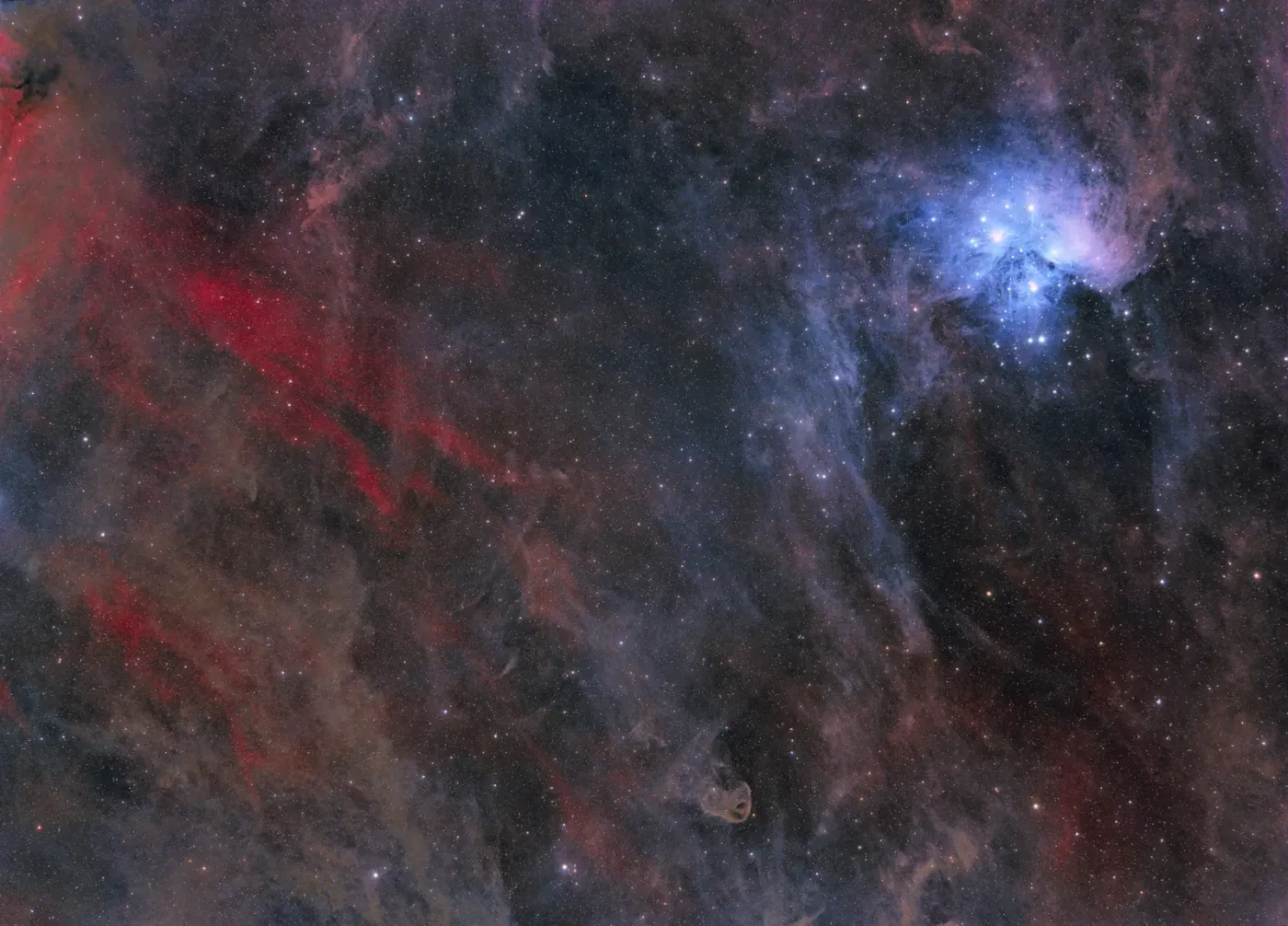

See more photos of the Pleiades
See images of the Pleiades submitted to previous years of the Astronomy Photographer of the Year competition
Never miss a shooting star
Sign up to our newsletter for monthly guides to the night sky as well as space news, astronomy events and special exhibitions from Royal Museums Greenwich
Header image: The Blue Details of M45: the Pleiades © Sándor Biliczki- Astronomy Photographer of the Year 2024


